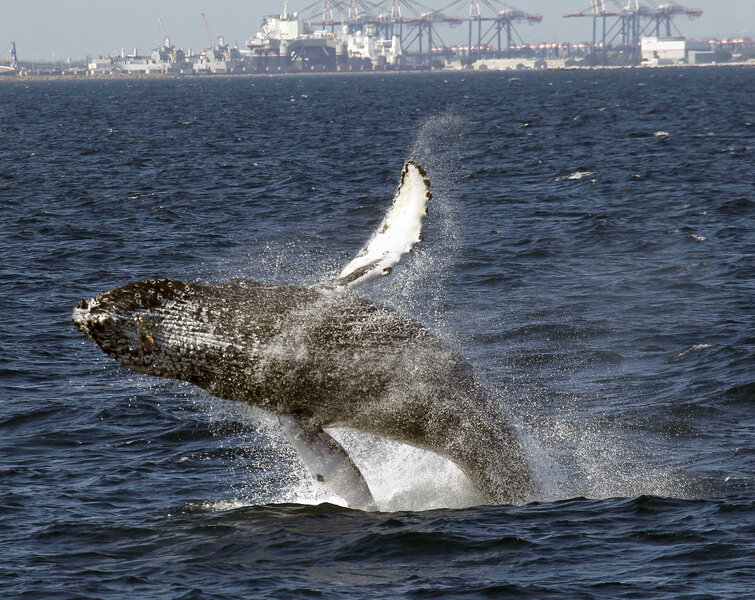How humpback whales made a global comeback
Loading...
When the Pacific Whale Foundation (PWF) was founded in 1980, its researchers would drive up and down the coast of Hawaii waiting to see a whale. At that time, only a few hundred humpback whales made it to the islands per year. Now, more than 10,000 do.
The recovery of the Hawaiian coast population is indicative of the species’ worldwide rebound from the brink of extinction, including a recently reported resurgence of humpback whales near Antarctica.
“They’re just these gentle giants, and you can really connect with them,” says Jens Currie, a PWF senior research analyst in Wailuku, Hawaii. “I do think they are the poster child for conservation success.”
At the heart of this turnaround is the almost complete end of whaling, but there are several other nuanced factors at play that scientists don’t yet fully understand. Ultimately, the whales’ recovery is a story of a global community coming together. And it is the story of righting a historical wrong.
People have been whaling for thousands of years, but technological advances resulted in the industry killing 2.9 million whales during the 20th century, endangering many species including the humpback whale.
In the early 1900s, groups including the League of Nations began pushing back against the industry. In the 1970s, the first recorded whale songs became a “call to arms” for activists and the public, inspiring the growing Save the Whales movement in the United States. Greenpeace planned trips starting in 1975 to confront whalers on the open ocean.
In response to declining populations and the public increasingly seeing the practice as inhumane, the International Whaling Commission called for a moratorium on whaling in 1982. Currently, Norway, Japan, and Iceland still hunt a small number of minke and fin whales.
The US Marine Mammal Protection Act and the Endangered Species Act have also played a major role in the humpback whales’ comeback. In 2016, nine of the species’ 14 population segments had recovered enough to be removed from the endangered species list.
Other whales, such as blue and fin whales, were also hunted to near extinction but have bleaker predictions for their futures than humpback whales.
The fact that humpback whales are found in every ocean in the world made it easier to get “global buy-in” from the general public as well as nonprofits, activists, and federal organizations to protect humpback whales, says Mr. Currie.
“In many ways, we’re really starting to see the fruits of that labor,” says Suzie Teerlink, a program coordinator at Whale SENSE Alaska, which promotes responsible whale watching.
In the 1970s, as whaling declined, whale watching became more popular, says Ms. Teerlink. Initially, people wanted to see what was then considered to be the last of the humpback whales, according to Currie.
Humpback whales are easy to spot from shore, provide a spectacle when they surface, and are “magical,” says Teerlink.
They also breed at the same time and place every year, allowing them to more easily find mates and recover faster than other whales, says Logan Pallin, lead author of the Antarctica study.
Still, humpback whales need ongoing efforts to protect them, especially the populations with negative growth trends, says Teerlink. An important part of that work includes more research to understand population changes and create guidelines for protecting whales.
For example, the Antarctica population’s growth may be in part because reduced winter sea ice has extended the time pregnant whales can feed and build up energy in the open water. In the long term, the effects of these environmental changes could mean a decrease in available prey.
Much whale research is outdated since it is based on animals “that were killed up to 100 years ago,” says Mr. Pallin. His research depends on a new technique to collect tissue samples through nonlethal methods. During collection, the whales feel what is equivalent to a mosquito bite for humans.
“Sometimes it is just staggering what we haven’t figured out yet,” says Teerlink. “They’re so far moving. They’re so adaptable. They spend most of their lives underwater.... There’s a lot to learn and there’s probably a lot that we can’t actually know.”








